The Gift of South Dakota
Subscriptions to South Dakota Magazine make great gifts!
Subscribe today — 1 year (6 issues) is just $29!
Double the Fun in Carthage
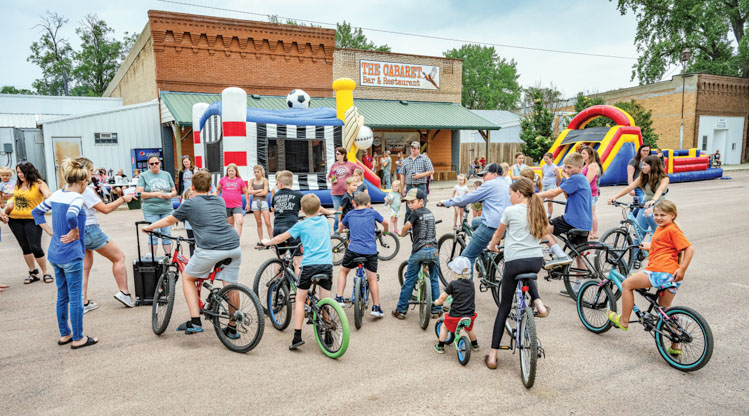 |
| Cabaret Days is Carthage's annual summer celebration and includes a kids' scavenger hunt on Main Street. |
The road through Carthage may not be heavily-traveled, but there’s enough happening in the Miner County town to have two of a lot of things — two recreational lakes, two museums, two antique stores, two eateries and two big city-wide festivals.
In the late 1800s, railroads needed at least a maintenance depot and/or water tower every 7 to 10 miles. Carthage was one of those spots. The original location sprouted from the prairie a bit further east and was moved once the tracks were installed. Surveyor Frank Ward named it for his hometown of Carthage, New York. “All the streets were named after Frank’s brothers,” historian Sally Madison says. They include Thomas, James and Frederick.
Shortly after founding Carthage, Ward donated a lot to the Coughlin family, whose son, Carthage James Coughlin, was the first child born in the new town. Their 13-room house was added to the National Register of Historic Places in 2006 and operates today as the Coughlin Inn.
The family’s second son, Charles Coughlin, earned an engineering degree from South Dakota State University in Brookings and served as president of the Briggs and Stratton Corporation from 1935 to 1972. In the 1920s, he donated funds to build the Coughlin Campanile, a 165-foot-tall tower of Indiana white limestone, red brick and concrete that still stands on the SDSU campus along Medary Avenue in Brookings.
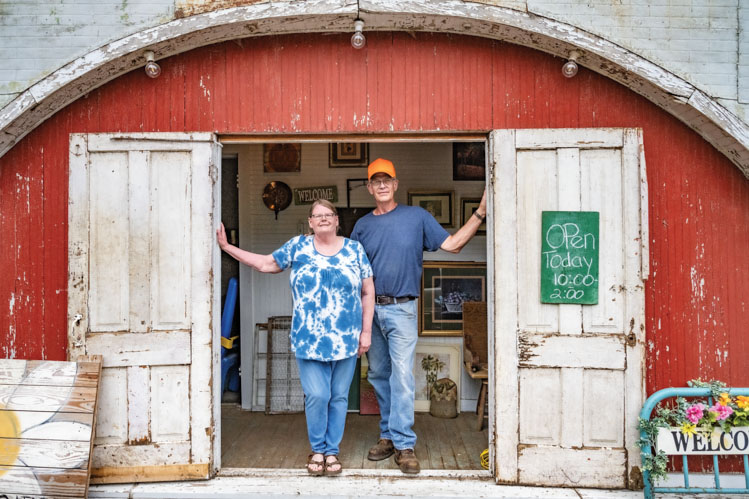 |
| Kim and Dave Van Asperen periodically open the former Carthage Opera House as an antique store. |
Disaster is a familiar story in South Dakota towns, and Carthage has seen its share. A fire in 1910 destroyed almost the entire north side of Main Street. Longtime resident Lorelee Nelson said people still refer to “before the fire” and “after the fire.” A tornado in 1947 killed one person and destroyed 150 buildings in the area. Although there’s not a traffic light in all of Miner County, Carthage had an airport until around 1948 when the family that operated it was killed in a plane crash.
The Works Progress Administration built a dam and bridge to form “Old Lake Carthage,” but the dam washed out in the early 1960s. A larger dam nearer to town now holds “New Lake Carthage” along with remnants of the old lake. A campground is operated through a partnership between the city and the state Department of Game, Fish and Parks.
Even those with little knowledge of Carthage might recall legendary wanderer Chris McCandless, who spent parts of two years living in town and working at the grain elevator before hitchhiking to Alaska, where he eventually died in an abandoned bus. The story brought Hollywood to town for filming of Into the Wild. Locals fondly remember the wrap-up party that director Sean Penn held in the city park. Memorabilia from the movie is displayed inside The Cabaret bar and at the Straw Bale Built Museum.
More than 1,300 bales insulate the Straw Bale Built Museum and help it maintain a constant temperature year-round. Fundraising for the community museum began in 1999 with volunteers and state penitentiary inmates providing the labor. Norbert and Barbara Moldan operate the museum. “Norbert might be the president, but I run it,” Barbara laughed. The Moldans are proud of the museum’s display of Carthage School class photos from 1923 through 1983.
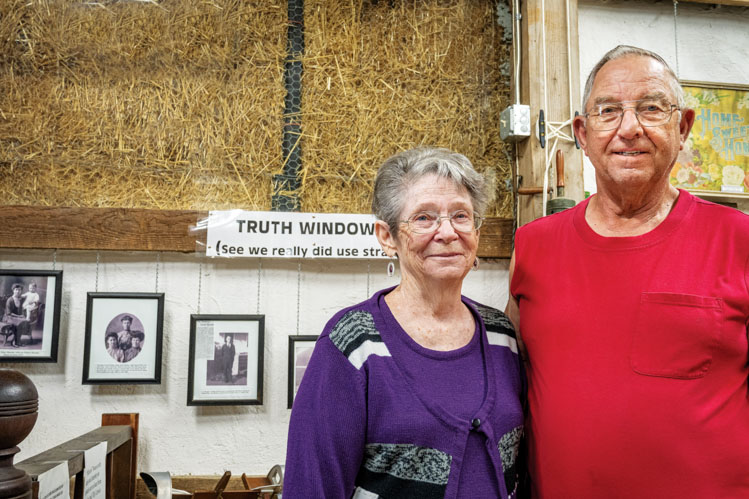 |
| Barbara and Norbert Moldan operate the Straw Bale Built Museum. |
Strawbale Days and Cabaret Days — along with annual events like a haunted house in the basement of the city auditorium, Easter egg hunt and fishing derby — keep the town hopping throughout summer and fall. A community play, parade and cow pie bingo are highlights of Strawbale Days in August. Cabaret Days in June features lawn mower racing, a Main Street scavenger hunt for kids and live music. Pheasant hunting fills area accommodations and a new “Fall Into Carthage” vendor fair aims to send hunters home with local art.
Mayor David Hattervig says the events are important because they attract out-of-town visitors, a big deal in a city of 126 people. “You can only turn over the money within town so many times,” he says. “We need people coming from elsewhere.”
Along with the Lake Carthage campground, the city campground on the opposite end of town has 14 camping spots. The entire park is available for rent to large groups. Since neither campground has shower facilities, the city created a shower hall and laundromat in the former city hall building.
On the south side of Main Street, the Prairie Inn serves as cafe, limited general store and bait shop. Directly across the street is The Cabaret, which serves food inside and in an outdoor beer garden.
When former Carthage News publisher and area businessman Lyle Darnell decided the vacant former grocery store building needed something to keep it alive, he thought back to what founded the town — trains. His friend, artist Alan Windedahl, had experience building model railroad dioramas and the pair began recruiting volunteers for Rails and Relics. A stick-by-stick replica of Carthage’s Main Street in the 1920s got things underway and the project is growing to include a representation of the entire state of South Dakota.
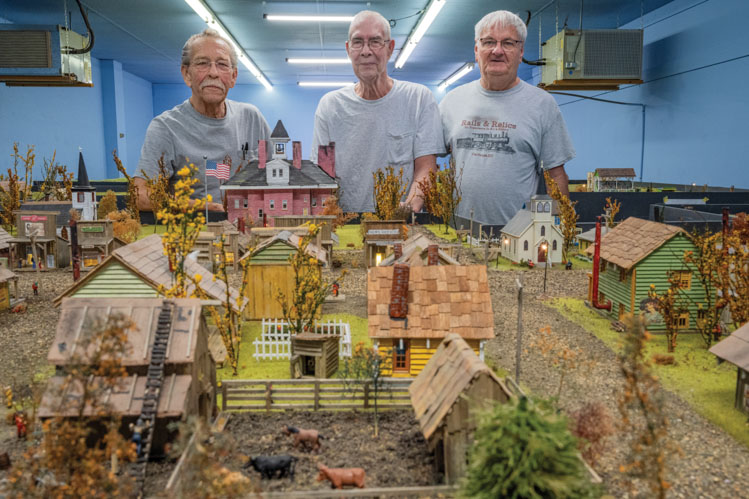 |
| Lyle Darnell, Alan Windedahl and Merlin Moe spend time building at Rails and Relics, a model railroad recreation of Carthage in the town's former grocery store. |
“We are the art kind of model railroad, not an exact replica,” Darnell says. The HO scale layout already includes the Ingalls Homestead at De Smet, the James and Missouri rivers and the Badlands are beginning to rise from the tabletop. “We have no delusions of grandeur,” Darnell laughed. “We know we aren’t going to make Carthage a tourism destination with this, but it gives some old geezers something to really get into.”
Age and health issues have slowed progress on the project, but new volunteers are continually recruited to keep building. “It’s fun to see the people look and find everything,” says Windedahl, who’s family homesteaded on the site that is now Carthage.
Locals are equally delighted when visitors explore the town itself, described by Laura Ingalls Wilder in These Happy Golden Years as the place where she first taught school. “I wouldn’t want to be anywhere else,” Darnell says. “This is a real fine place to be even if you have to drive 25 miles for a loaf of bread.”
Editor’s Note: This story is revised from the September/October 2023 issue of South Dakota Magazine. To order a copy or to subscribe, call (800) 456-5117.

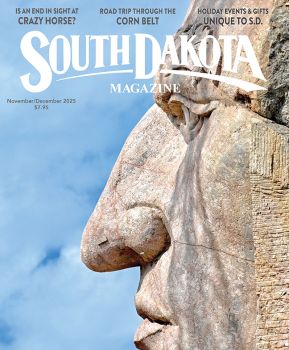


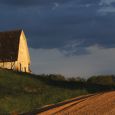
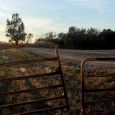


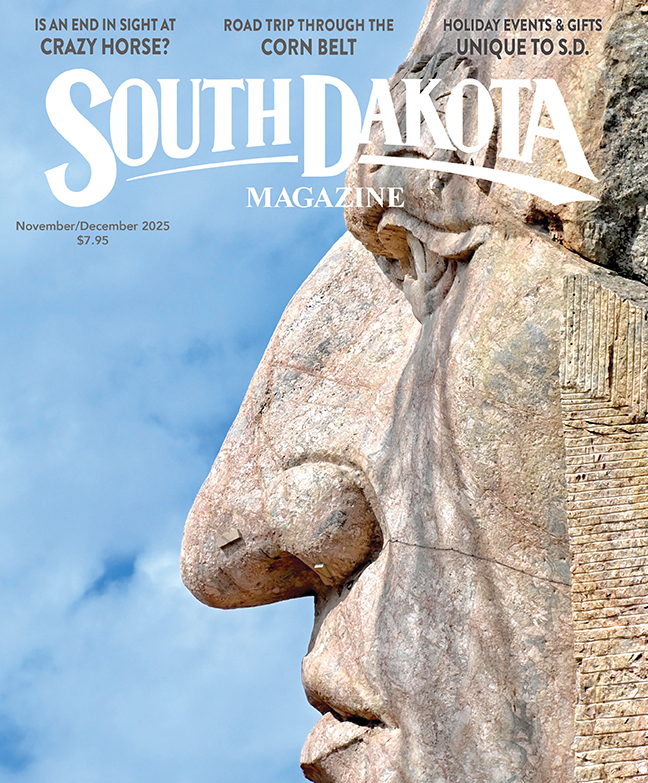

Comments